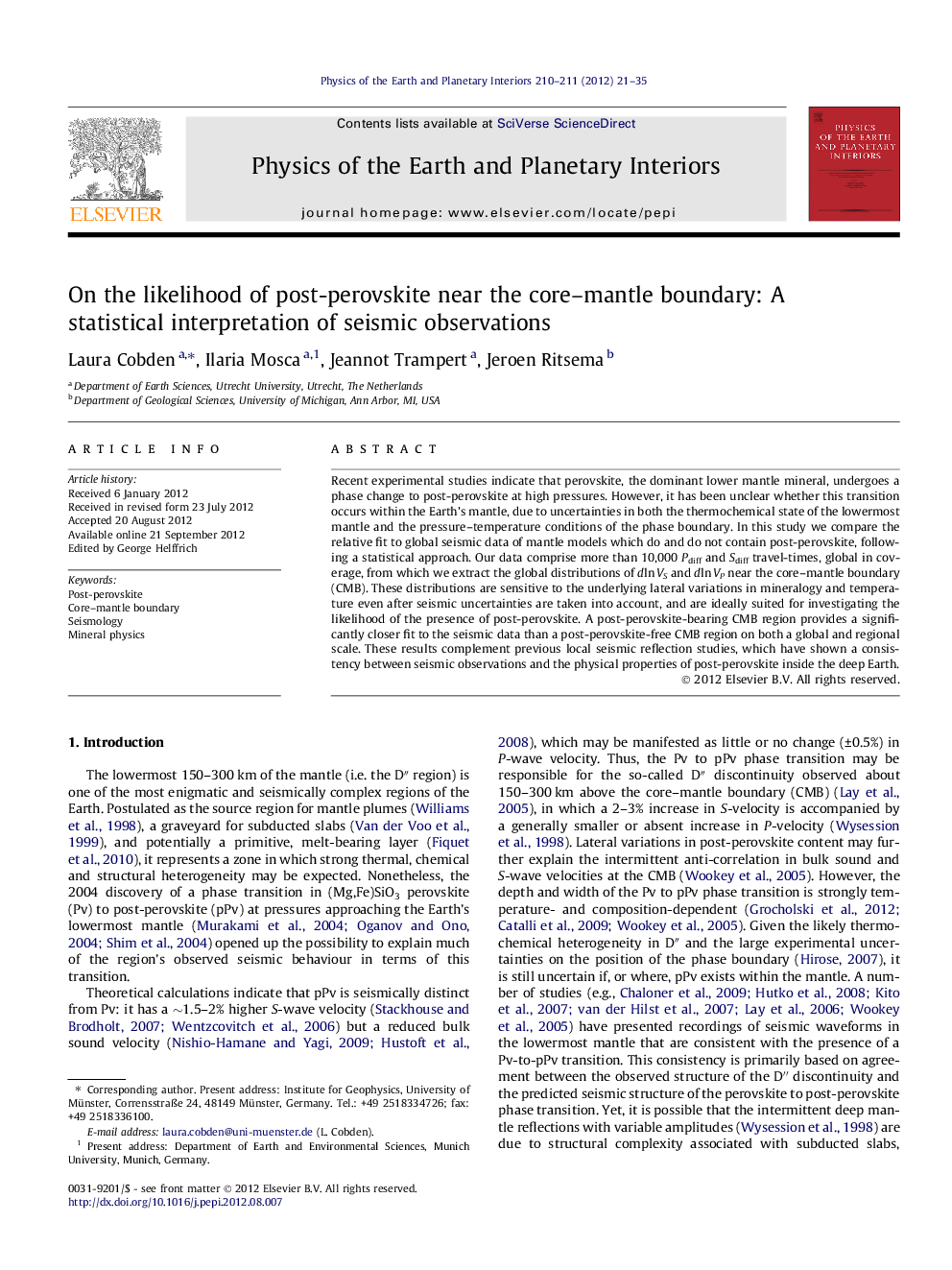| Article ID | Journal | Published Year | Pages | File Type |
|---|---|---|---|---|
| 4741781 | Physics of the Earth and Planetary Interiors | 2012 | 15 Pages |
Recent experimental studies indicate that perovskite, the dominant lower mantle mineral, undergoes a phase change to post-perovskite at high pressures. However, it has been unclear whether this transition occurs within the Earth’s mantle, due to uncertainties in both the thermochemical state of the lowermost mantle and the pressure–temperature conditions of the phase boundary. In this study we compare the relative fit to global seismic data of mantle models which do and do not contain post-perovskite, following a statistical approach. Our data comprise more than 10,000 Pdiff and Sdiff travel-times, global in coverage, from which we extract the global distributions of dln VS and dln VP near the core–mantle boundary (CMB). These distributions are sensitive to the underlying lateral variations in mineralogy and temperature even after seismic uncertainties are taken into account, and are ideally suited for investigating the likelihood of the presence of post-perovskite. A post-perovskite-bearing CMB region provides a significantly closer fit to the seismic data than a post-perovskite-free CMB region on both a global and regional scale. These results complement previous local seismic reflection studies, which have shown a consistency between seismic observations and the physical properties of post-perovskite inside the deep Earth.
► Our seismic observations comprise a large global set of Pdiff and Sdiff waveforms. ► We infer the global distributions of dln VP and dln VS at the core mantle boundary. ► We attempt to reconstruct these distributions with various thermochemical models. ► Models containing post-perovskite fit better than those lacking post-perovskite. ► Data suggest lateral variations in both temperature and composition are required.
